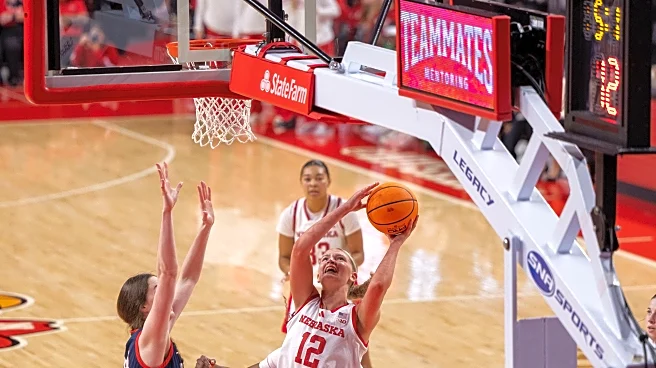What's Happening?
Nebraska's agricultural sector is experiencing significant financial pressure due to rising interest rates, land values, input prices, and equipment costs, as detailed in a report by the Nebraska Farm Bureau (NEFB). The report, authored by NEFB Economist
and Policy Analyst Abygail Streff, highlights how these escalating expenses are straining farm budgets and threatening the economic stability of rural communities across the state. Key findings include agricultural loan interest rates averaging 7.29% in 2025, a 14% increase in real agricultural land values between 2024 and 2025, and a 69% rise in farm machinery parts costs since 2020. Fertilizer costs have also surged, with corn fertilizer costs forecasted to increase by 44.8% since 2020. These interconnected expense increases are compounding the financial challenges faced by Nebraska producers.
Why It's Important?
The rising costs in Nebraska's agricultural sector have broader implications for the state's economy, which heavily relies on agriculture, accounting for nearly one-fourth of its GDP. The financial strain on farm and ranch families affects local lenders, equipment suppliers, input dealers, and rural communities. Declining loan repayment rates and elevated loan demand signal increasing financial stress in the countryside. The Nebraska Farm Bureau emphasizes the need for strategic policy responses to strengthen the agricultural economy, including expanded trade, year-round E15 availability, and support for livestock expansion. Addressing these cost pressures is crucial for maintaining the economic health of Nebraska's rural areas and ensuring the sustainability of its agricultural sector.
What's Next?
The Nebraska Farm Bureau continues to advocate for policy solutions to alleviate the financial pressures on the state's agricultural sector. These include efforts to grow markets for Nebraska commodities and support for livestock expansion. The organization stresses the importance of implementing policies that can help stabilize farm and ranch operations, thereby benefiting all Nebraskans. As the financial environment for producers tightens, strategic responses will be essential to navigate the challenges posed by rising costs and low commodity prices.
Beyond the Headlines
The report underscores the interconnected nature of the financial challenges facing Nebraska's agricultural sector. Higher land values lead to increased taxes and rents, while rising interest rates make financing more expensive. These factors, combined with spikes in input prices, erode producers' ability to remain profitable. The situation calls for a comprehensive approach to policy-making that considers the long-term sustainability of agriculture in Nebraska and its impact on rural communities.














